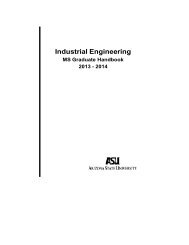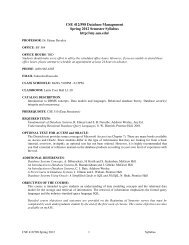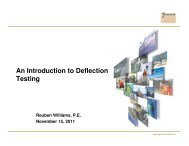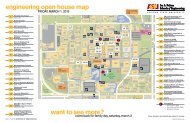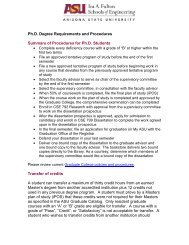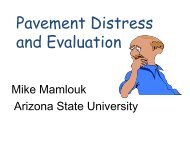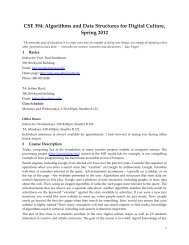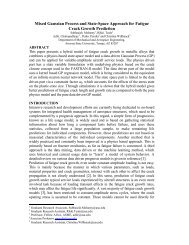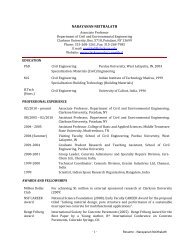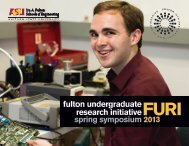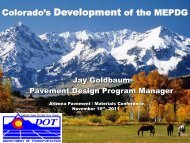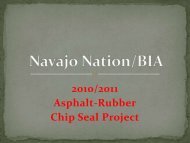2003-2004 Department of Computer Science and Engineering
2003-2004 Department of Computer Science and Engineering
2003-2004 Department of Computer Science and Engineering
Create successful ePaper yourself
Turn your PDF publications into a flip-book with our unique Google optimized e-Paper software.
Reseach CentersCEINT funds research projects toextend the reach <strong>of</strong> embeddedsystems applications into newmarkets <strong>and</strong> to broaden the depth <strong>of</strong>existing applications. The ResearchCommittee members organize,evaluate, <strong>and</strong> recommend proposalsto the CEINT Board <strong>of</strong> Directors forfunding twice a year.“The environment used in thecourse is very close to what industryuses,” Lee said. “What students learnin this course is a very good sellingpoint. I think they can find achallenging <strong>and</strong> promising job to starttheir career.”The second course exploreshardware/s<strong>of</strong>tware interfaces inembedded systems, with a focus onperipheral interfaces. Studentscontrol these hardware componentsthat interact with the environmentusing s<strong>of</strong>tware written with high-levellanguage. Motorola helped outfit thedevelopment systems in a laboratoryfor this course, which is intended tocomplement the one on real-timeembedded systems.Students appear to be pleased withthe new classes, each <strong>of</strong> which hasbeen <strong>of</strong>fered once. One studentwrote on evaluation for thehardware/s<strong>of</strong>tware interface course,“This was one <strong>of</strong> the best classes Ihave attended at ASU in terms <strong>of</strong>educational value.”Of course, the consortium isn’t allfor the students. The creation <strong>of</strong> newembedded systems technology is avital part <strong>of</strong> CEINT activities. Theconsortium provides one year <strong>of</strong>seed funding to researchers toperform initial work on a project suchthat an outside agency or corporationwould be interested in it. Althoughembedded systems are found inmany different devices, work fundedby CEINT focuses ontelecommunications applications.The work <strong>of</strong> Assistant Pr<strong>of</strong>essorKaramvir Chatha is a good example.One <strong>of</strong> his projects looks atadvanced architectures forembedded processors in highperformance communicationsystems.As embedded processortechnology becomes smaller—90nanometers or less—acommunication signal requires morethan one clock cycle to travel acrossthe chip. Signal integrity is also anissue, as signals are corrupted dueto crosstalk errors duringcommunication. Thus, typical busbasedarchitectures can’t be utilizedfor these embedded processors.One solution is to build a networkon a chip. This advanced architectureenables communication within asingle embedded processor just as acomputer network allows PCs to talk.But the hardware for a network on achip must be area <strong>and</strong> powerefficient. Chatha has created aprototype <strong>of</strong> a nanoscale router, <strong>and</strong>is testing it now.With the success <strong>of</strong> both research<strong>and</strong> academic programs, CEINT hasproved what a university-industrypartnership can achieve. In March<strong>2003</strong> Intel, Motorola <strong>and</strong> ASUextended their commitment to CEINTthrough July 2005. Recruitment <strong>of</strong>new members is underway. Theultimate goal <strong>of</strong> all CEINT’s activitiesis to turn the Phoenix metro area <strong>and</strong>the state <strong>of</strong> Arizona into a globallyrecognized center for embeddedsystems. It’s an ambitious goal, butthe consortium is well on its way.ARIZONA STATE UNIVERSITY 17



